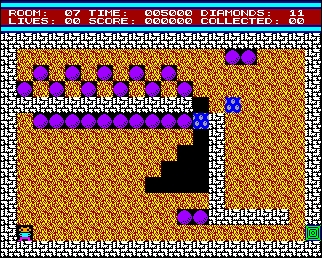CFOG's PIP, December 1988, Volume 7 No. 6, Whole No. 68, page 87
More on Bradford
by Bob Haight
Bradford version 2, a print formatter for dot matrix printers, was reviewed by Ben Cohen in the October 24 issue of PIP. His review gives a good picture of the program, but included an error. Inline commands do not need to be preceeded by a space, as illustrated in the manual. Thus, you can change type styles within a word and also have underlines end with the end of the word. The need for a space after the command means that if you want a space after the change of font or end of the underlining, you must place two spaces there, and it can be easy to overlook.
Ben is quite right about the poor organization of the manual and need for an index. I worked around this by making a quick reference guide, similar to that supplied with VDE, crowded and printed 8 lines per inch to fit on one page. I rearranged commands to fit my sense of order and indexed sections to pages in the manual.
Version 2 allows printers to print in two or three passes per single height line. On an Epson MX, the two pass gives better print, with three pass leaving curves less smooth. An RX, FX or compatible that prints 240 dots per inch horizontally would look better on the three pass. Also, some of the fonts printed in odd numbered magnification (1, 3, 5 etc.) on an MX don't look as good because the program adjusts for the poorer print resolution by omitting or moving a printed dot to one side or another. But it is still better than the native fonts.
An excellent use for the double high fonts is not only in printing headlines and such, but also for printing material for people with visual impairments. The church I pastor uses the word processor to prepare newsletters and worship service programs. Although I use another method to make large print copies, Bradford 2 could easily be used to give serviceable even if not "beautiful" copies. It is greatly appreciated by people who use them.
Ben referred to Bradford being a memory hog. The "tiny" program runs on an Osborne 1, but not if you have a Drive C: unit activated, or from within WordStar 2.26 using the "R" command. I often edit a file, call Bradford 1.2 from within WordStar using a function key, and have it print using the print buffer with Drive C: while I gather material for the next project or get a cup of coffee. Since I can't use Bradford 2 in this manner, I keep version 1.2 and a dozen fonts on my double density WordStar disk. On an Epson MX there is no difference in print quality between versions, only different features and numbers of fonts and widths available.
A closing note is that fonts for version 1.2 can be used with version 2 after a simple conversion. Unfont (version 2) or a similar file in BRADFONT.LBR (for v 1.2) creates a source file that can be edited. By adding a line indicating the height of the font in rows and a line indicating the maximum width in columns of the font, a new font file can be created with a v. 2 utility.
Several additional fonts and related programs for version 1.2 are in the CFOG library and on the RCPM. The earlier program, eight fonts, and a short information file are found on library disk CFOGPTR.004 and on the RCPM in BRADFORD.LBR. Sixteen fonts, including forms of script and "Olde English" fonts are in EXTRAFON.LBR on the RCPM. BRADCON.LBR contains instructions for designing additional fonts, four fonts, editable "source code" for one of them, and a program to convert the editable text file to a usable v. 1.2 font. Three more fonts (two refine Contorer's originals) are included in BRFONTS.LBR. BRADFONT.LBR includes a program to convert whole fonts to an editable text file, while EDFONT.LBR allows converting individual characters. BRADFIX.PQT gives patches to eliminate the printer type question and make updates. BRADFORD.MZG gives hints about the control commands, but many are guesses and several are wrong.
The trade off in using Bradford is reduced print speed. A file printed on an Epson MX 80 III, advertised at 80 cps, took about 35 seconds in normal mode and 130 seconds in double emphasized mode, which fully fills the dot pattern vertically and horizontally. Bradford took 170 seconds plus time to load. FancyFont 2.1, a "Personal typesetter", using roman 11 point type, took 370 seconds plus about a minute to load.
Contorer invites comparison with other printing programs, including FancyFont. Bradford is not as sophisticated or flexible as FancyFont 2.1, which does a wide variety of heights of characters, allows word wrapping, easily mixes up to 10 high quality and 10 native printer modes/fonts as desired, and is quite precise in specifying horizontal and vertical dimensions. FancyFont is my first choice for work that looks as good as I can get from my printer. Bradford serves well for correspondence and other work that needs better than dot matrix quality and either more speed or less demanding formatting than FancyFont. Each has its place, but I use Bradford often.

